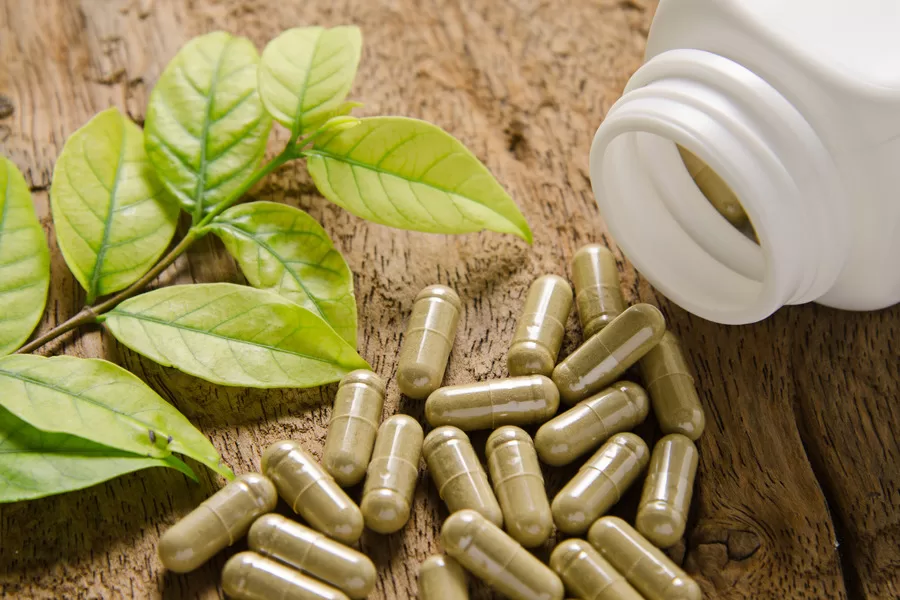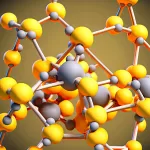
Are you on a quest for a natural boost to your health and well-being? Discover Chrysin, a hidden gem within the realm of natural supplements, offering more than just antioxidant protection.
Found in the tranquility of chamomile tea, the sweetness of honey, and the protective layers of propolis, Chrysin stands out for its remarkable health benefits. From fending off oxidative stress to acting as a guardian against the onset of disease and aging, its role in nature’s pharmacy is unparalleled.
Exploring Chrysin
Chrysin shines as a beacon within the flavonoid family, celebrated for its potent antioxidant capabilities. This natural compound doesn’t just fend off oxidative stress — it acts as a guardian for our cellular health, warding off the potential onset of disease and the effects of aging. Its presence is notable in a variety of sources, from the calming chamomile tea to the sweetness of honey and the protective embrace of propolis, crafted by bees from the sap of trees. The use of propolis by bees as a defense mechanism highlights Chrysin’s inherent protective qualities, underscoring its importance in natural health remedies.
Chrysin in Traditional Healing Practices
For centuries, Chrysin has been a staple in the world of traditional healing, valued for its extensive health benefits. Its prowess in combating inflammation is particularly noteworthy. Chronic inflammation, a silent adversary, contributes to a myriad of health challenges, including but not limited to cardiovascular diseases, metabolic syndrome, and various forms of arthritis. By intervening in the inflammatory process, Chrysin acts as a natural safeguard, promoting health and staving off disease.
Moreover, the heart-health benefits of Chrysin cannot be overstated. It plays a critical role in managing blood pressure and cholesterol levels, addressing two pivotal factors in cardiovascular health. Through these actions, Chrysin supports the heart’s health, ensuring it beats strongly and efficiently.
Chrysin and Its Modern Appeal
The allure of Chrysin has transcended traditional boundaries to make its mark in the contemporary fitness and wellness arenas. Its potential to modulate testosterone levels has caught the eye of many seeking natural avenues to sustain or enhance hormonal health. Testosterone, vital for muscle development, bone health, and vitality, becomes a focal point for those aspiring to improve their physical fitness and hormonal equilibrium through natural means. The intriguing possibility that Chrysin could curb the conversion of testosterone to estrogen has sparked a wave of interest among health enthusiasts and professionals alike.
While Chrysin’s benefits are compelling, embracing its use requires a nuanced understanding and an informed approach. Traditional uses and preliminary studies provide a foundation, yet comprehensive scientific exploration is crucial to unlock its full potential and confirm its safety. Individuals considering Chrysin as part of their wellness routine are encouraged to seek the guidance of medical professionals, ensuring it complements their health objectives without compromise.
Between Chrysin and Testosterone
Testosterone plays a pivotal role in shaping our physical health and overall vitality. It influences muscle strength, bone density, sexual health, and even our mood. Both men and women rely on this essential hormone for their well-being. Chrysin, a natural flavonoid, has garnered attention for its potential to boost testosterone levels. This potential stems from its ability to block the conversion of testosterone into estrogen, a process known as aromatization. Aromatization is a natural metabolic pathway, but limiting it could theoretically enhance testosterone availability.
Examining the Scientific Landscape
When we dive into the scientific investigations on Chrysin, the waters become murky. Initial studies ignited excitement with findings suggesting that Chrysin could indeed thwart the enzyme responsible for aromatization, hinting at the possibility of elevated testosterone levels. Yet, as research progressed, the initial optimism met with skepticism. Many follow-up studies have pointed out that Chrysin’s journey from ingestion to effect faces significant obstacles, notably its bioavailability. This term, bioavailability, refers to the extent and rate at which a substance enters the bloodstream to be used by the body. Unfortunately, Chrysin struggles in this aspect, severely limiting its ability to act as an effective testosterone enhancer in practical scenarios.
The Bioavailability Conundrum
The core challenge with harnessing Chrysin’s theoretical benefits lies in its bioavailability. Simply put, when Chrysin is consumed orally, the body finds it difficult to absorb it efficiently. This absorption bottleneck means that despite its potential on paper, the real-world impact of Chrysin on testosterone levels may be minimal. Recognizing this issue, researchers and supplement manufacturers have explored various strategies to improve Chrysin’s bioavailability. These methods include formulating Chrysin with other substances that can enhance its absorption and utilization within the body. While these efforts are promising, the quest to fully unlock Chrysin’s potential as a testosterone booster continues.
As we stand, the journey of Chrysin from a compound of interest to a widely recognized testosterone booster is fraught with challenges. The scientific community remains engaged in unraveling the complexities of Chrysin’s interaction with our metabolic pathways. For individuals intrigued by the potential of Chrysin, staying informed about the latest research findings is crucial. Moreover, consulting healthcare professionals before embarking on any supplement regimen is essential to navigate this evolving landscape safely.
Embracing Chrysin: A Thoughtful Approach
Chrysin’s allure in the realm of natural supplements is undeniable, but integrating it into your health routine demands a deliberate and educated approach. It’s about making informed choices, guided by expertise and an understanding of the subtleties involved in supplement usage.
- Consultation Is Key: Initiating any new supplement, Chrysin included, should be a collaborative effort with healthcare experts. This partnership is invaluable, ensuring that your venture into natural supplementation is both safe and customized to your health profile. A healthcare provider’s insight can help navigate any potential interactions with existing conditions or medications and tailor advice specifically to you.
- The Importance of Quality: The market’s variability in supplement quality cannot be overstated. When it comes to Chrysin, the assurance of purity and efficacy is paramount. Opting for products from well-respected, transparent manufacturers can make a significant difference. These products should come with clear information on sourcing, manufacturing standards, and independent testing, ensuring you’re getting a top-tier supplement.
- Maximizing Absorption: Overcoming Chrysin’s bioavailability challenge is crucial for reaping its potential benefits. Supplements formulated with agents that boost absorption can be more effective. For instance, ingredients like piperine enhance how well Chrysin is absorbed into your system, amplifying its potential benefits.
- Tracking Your Journey: Observing how your body reacts to Chrysin is essential. Note any changes in vitality, mood, or physical condition. Documenting these observations can provide valuable insights when discussing your progress with a healthcare professional. It’s a proactive way to ensure your regimen is working as intended and make any necessary adjustments.
- Setting Realistic Goals: The journey with Chrysin, like any natural supplement, should be approached with balanced expectations. Its effects can vary widely among individuals, and it’s not a cure-all. Viewing Chrysin as one component of a broader wellness strategy, which includes a balanced diet and regular exercise, is critical.
Understanding Safety and Potential Reactions
When considering the integration of any natural supplement into your wellness routine, grasping its safety and possible adverse reactions is key. This particular flavonoid, celebrated for its health-promoting properties, is largely safe for consumption in moderate doses. Nevertheless, awareness around its side effects, especially when taken excessively or alongside other substances, is vital for informed usage.
Recognizing Adverse Effects
Studies indicate that this compound is typically well-received by users, with minimal adverse effects reported. Common issues may involve digestive discomfort, including symptoms like nausea or an upset stomach. A small fraction of users might encounter allergic responses, characterized by skin irritation or difficulty breathing, particularly those with sensitivities to similar botanical compounds.
The possibility of interaction with other medications or supplements warrants attention. This flavonoid could alter the body’s processing of certain drugs, affecting their potency. Such interactions are crucial to consider, especially for individuals under medication for ongoing health issues, highlighting the importance of professional health advice when combining it with other treatments.
Implications of Prolonged Usage
The long-standing safety of using this supplement remains a topic of ongoing research. While its short-term application seems to pose little risk, the effects of sustained consumption are less clear. Concerns revolve around its influence on hormonal equilibrium and liver health over time. Given its mechanism in modulating estrogen levels, the theoretical risk of hormonal imbalance with prolonged use has been noted, necessitating further study to ascertain these impacts.
Those pondering extended use should proceed under medical supervision. It might be prudent to undergo periodic health assessments, such as hormone level checks and liver function tests, to monitor for any negative outcomes.
Guidelines for Responsible Use
Adopting a cautious approach by starting with lower quantities and observing bodily reactions before adjusting to the suggested dosage can help mitigate risks. Opting for products of high purity and from trusted sources also contributes to minimizing the likelihood of encountering adverse effects.
In sum, while the health advantages of this flavonoid are promising, embracing its use with awareness and caution is paramount. Understanding the potential for adverse reactions, cautious interaction with medications, and the considerations for its long-term application enables users to make well-informed decisions about its inclusion in their wellness practices.
Conclusion
Chrysin is a potent antioxidant found in chamomile tea, honey, and propolis, offering diverse health benefits including oxidative stress reduction and disease prevention. Traditionally used to combat inflammation and support cardiovascular health, Chrysin’s modern appeal lies in its potential to naturally balance testosterone levels. Scientific studies on Chrysin reveal challenges in bioavailability, impacting its effectiveness as a testosterone booster, yet ongoing research and improved formulation methods show promise. Responsible use of Chrysin involves consulting healthcare professionals, prioritizing product quality, enhancing absorption, and setting realistic health goals. Safety considerations and potential side effects, especially with long-term use, underscore the importance of cautious, informed supplementation.
FAQs
Identified for its antioxidant prowess, this substance is naturally occurring in chamomile, honey, and bee propolis, offering benefits like mitigating oxidative damage and potentially warding off various ailments.
Valued for its anti-inflammatory and heart-supportive properties, this compound is also being studied for its role in maintaining hormonal equilibrium.
The primary hurdle is its low bioavailability, impacting the body’s ability to effectively absorb and utilize the compound, particularly concerning hormonal balance.
Incorporating specific enhancers such as piperine can improve its bioavailability. It’s also wise to seek tailored advice from health experts to optimize its use.
While generally safe, it’s possible to experience mild digestive issues or interactions with other medications. Cautious, informed usage, preferably under medical supervision, is recommended.







